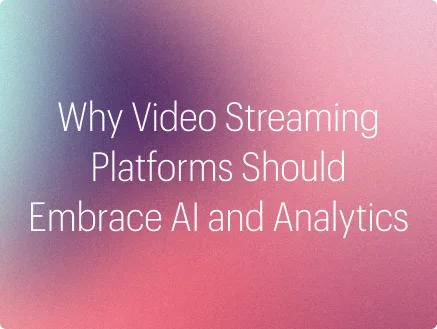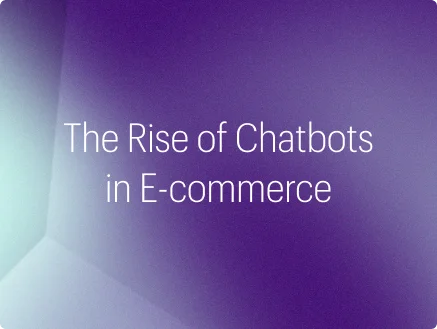The media and entertainment industry is a unique intersection of art, culture, and technology. It has five key revenue drivers: content creation, distribution, consumption, advertising, and monetization. According to Statista [1], this ever-evolving industrial domain will generate total revenue of USD 2.9 trillion by 2026.
Each disruption in media and entertainment impacts these revenue drivers. Let’s take the recent pandemic-induced disruption as an example. It sparked a radical change in content distribution, consumption, and monetization. With consumers confined indoors, direct-to-consumer business models like over-the-top (OTT), video-on-demand (VOD), and subscription-based streaming services gained increased prominence.
Early adopters of this new business model reaped benefits during the tricky pandemic period. For instance, an American subscription-based streaming service giant [2] added around 26 million new subscribers during the first half of 2020. Another leading American media corporation [3] restructured its business model by accelerating its direct-to-consumer strategy after the pandemic outbreak. It resulted in a 73% increase in generated revenue, while operational losses decreased from USD 1.1 billion to USD 466 million.
Like the increasing popularity of streaming services, there are several other factors that are transforming the media and entertainment landscape. And for companies operating in this space, it is vital that they understand these factors, realign their business models, and fine-tune their organizational strategies. In this article, we will look at the three major factors shaping the future of media and entertainment.
- Growing social media influence
- Increasing buying power of Gen Z
- Analytics and Artificial Intelligence (AI)
#1 Growing social media influence
Social media is at the forefront of redefining the media and entertainment industry. It is engaging and fast-paced, and its influence is growing in different segments, including music, television, and publishing. Also, social media channels are slowly transitioning from communication platforms to interactive tools that enable content creation and information sharing.
One of the key aspects of social media is the viral effect (or virality). It has a huge role in modern-day marketing, and what becomes viral in media and entertainment is driven by social media. To give an example, let’s look at the highly acclaimed South Korean TV series Squid Game [4]. In 2021, right after the first episode was released, it managed to generate a huge buzz on popular social media platforms, where people started sharing their reviews and discussing several theories. The word-of-mouth marketing through social media was so strong that it delivered incredible global traction to the show. And quite notably, among all the social media platforms, TikTok delivered maximum engagement, so much so that the Squid Game hashtag alone garnered over 65.2 billion views.
We can see similar examples of the growing social media influence in the publishing and music segments as well. An American bookseller [5] with numerous retail outlets in the country teamed up with the social media platform TikTok and its creator community to run a promotional campaign called “#BookTokChallenge” through the summer of 2022. The campaign delivered positive results, and the company recorded better sales figures. Likewise, TikTok and Instagram reels can create a viral effect for songs. Based on a recent study [6], 67% of TikTok users are more likely to seek out songs elsewhere after hearing them on the app.
Streaming service companies have been quite proactive in leveraging the power of social media to promote and market their content. They maintain a strong social media presence by constantly posting updates and forming fan communities. They also rely on these social media platforms to facilitate the use of new-age marketing techniques like influencer marketing and user-generated content (UGC), which deliver maximum engagement.
Traditional media and entertainment companies can’t turn a blind eye to social media anymore, as it is now very much part of the media and entertainment marketing ecosystem. It provides more transparency, relatability, and organic reach. And they can add significant value to the consumer experience while blurring the line between the content producer and the audience.
#2 Increasing buying power of Gen Z
Born between 1995 and 2010, Gen Z is the first generation of digital natives. They are a generation born in the digital era and raised on technological advancements. As a result of it, they are tech-savvy and comfortable with different digital technologies. According to a Bank of America survey in 2020 [7], Gen Z’s income is forecasted to expand fivefold to USD 33 trillion by 2030 and surpass that of millennials by 2031. Gen Z entering the market as consumers with significant buying power is set to revolutionize the industry.
Gen Z is unique and needs special attention—as customers, as an audience, and as creators—because of a few reasons. Based on a market research report, they watch an average of 7.2 hours of video content a day [8]. Large sections of them are known to be progressive in their political and social views. More members of this group endorse sustainability and express concerns about environmental issues like climate change and environmental protection than the older generations. M&E companies must quickly identify these characteristics to engage with this emerging group of consumers and drive their business.
Here are some of the characteristics that media and entertainment companies need to focus on:
- They are creators. Gen Z consumers are a generation of creators themselves. They like to inspire and influence people around them, and they look for digital platforms that empower them to do so. Digital platforms like YouTube, Twitch, TikTok, Instagram, etc., are currently Gen Z’s favorites because they enable content creation.
- They connect with niche online communities. As a group that grew up in the heyday of social media, whose formative years have coincided with the rise of technological advancements like the metaverse and Web 3, Gen Z is comfortable with virtual communities with no global boundaries. To connect and build long-lasting relationships with the Gen Z audience, brands need to create and manage fandom spaces online and keep the interaction going.
- They like to resonate with brands. Gen Z consumers look at brands differently. They seek brands that share similar beliefs, values, and personalities from a plethora of entertainment sources. And as advocates of social justice, they believe brands should endorse these values and make a difference.
#3 Analytics and Artificial Intelligence (AI)
Technology has always been a pivotal part of media and entertainment. From content creation and distribution to monetization and consumption, it has been a disruptive force for each element of the industry. One of the technological innovations spearheading this disruption is AI. And with advanced data-driven analytics solutions powered by AI and Machine Learning (ML), media and entertainment companies can improve business performance and user experience.
Aided by rapid digital transformation, AI has already made its mark when it comes to streaming services. It enriches real-time streaming of content with fast and effective encoding, broadcasting, and by organizing data. It also aids the business model through effective customization, transmission, text annotation, ad insertion, and much more to create a seamless user experience. For example, two renowned audio [9] and video [10] content streaming giants are extensively using deep learning and natural language processing (NLP) to ensure hyper-personalization, smart recommendations, etc., to boost the overall user experience. Deep learning models can understand the user’s mood and deliver highly personalized song queuing. AI can also help content producers understand user’s consumption patterns and orientations relatively easily with key insights.
The applications of AI are not limited to the streaming subdomain of media and entertainment. They have made a positive impact on every facet of the industry. For instance, a prominent Hollywood studio [11] is leveraging an AI tool to streamline distribution while forecasting prices and profits. This tool runs on an analytics system that uses big data to analyze various factors like star power, profitable distribution channels, and more to enable smart decision-making.
AI can also take over more tedious tasks, such as metadata tagging, relatively easily. Metadata tagging is hugely important as the data from media and entertainment sources keeps growing exponentially, and going through each frame manually requires significant time and effort. AI can help media producers and distributors bypass this hurdle. A leading US digital content network [12] uses AI video intelligence tools to analyze videos, perform video annotation, and add suitable tags, making it effortless to organize the content produced.
AI’s influence in media and entertainment is rapidly growing. AI systems are optimizing each component of the industry by empowering content makers, distributors, broadcasters, and all other stakeholders equally. Streaming platforms that embrace AI technology have already started experimenting by producing adaptive and interactive media content that constantly engages the users. And as AI technology matures, more and more content producers will start producing similar adaptive content, thus transforming the entire media and entertainment landscape.
This article is part of a series on the Media and Entertainment industry. Please check out our other articles to find out more about the role of data & analytics in the Esports & Streaming subdomains.
Bibliography
1. Guttmann, A. “Global Entertainment and Media Market Size 2027.” Statista, 2023. https://www.statista.com/statistics/237749/value-of-the-global-entertainment-and-media-market/.
2. “The Unassailable Rise of Netflix.” ACCA Global. Accessed May 25, 2023. https://www.accaglobal.com/hk/en/student/sa/features/netflix.html.
3. Lang, Brent. “Disney Earnings Beat Expectations Thanks to Streaming Growth.” Variety, February 12, 2021. https://variety.com/2021/biz/news/disney-earnings-disney-plus-streaming-1234906441/.
4. Goblot, Magali. “How Squid Game Gained Popularity through Social Media.” CBR, March 3, 2022. https://www.concordiabusinessreview.com/post/how-squid-game-gained-popularity-through-social-media.
5. Paris, Martine. “BookTok Book List with 43 Billion Views Has Sent Barnes & Noble Sales Soaring.” Bloomberg.com, March 11, 2022. https://www.bloomberg.com/news/articles/2022-03-11/booktok-book-list-with-43-billion-views-has-sent-barnes-noble-sales-soaring#xj4y7vzkg.
6. Kotok, Aviv. “How Is TikTok Affecting the Music Industry?” The Science Survey, December 10, 2022. https://thesciencesurvey.com/arts-entertainment/2022/12/10/how-is-tiktok-affecting-the-music-industry/.
7. DeVon, Cheyenne. “Here’s How Much the Typical Gen Z Worker Makes in Every U.S. State.” CNBC, September 3, 2022. https://www.cnbc.com/2022/09/03/how-much-money-gen-z-workers-earn-in-every-state.html#:~:text=Gen%20Z’s%20economic%20power%20is,surpass%20millennials’%20income%20by%202031.
8. FAUGHNDER, RYAN. “Gen Z Spends Half Its Waking Hours on Screen Time. Here’s the Good and Bad News for Hollywood.” Los Angeles Times, April 12, 2022. https://www.latimes.com/entertainment-arts/business/newsletter/2022-04-12/gen-z-spends-half-its-waking-hours-on-screen-time-heres-the-good-and-bad-news-for-hollywood-the-wide-shot.
9. Kaput, Mike. “How Spotify Uses Artificial Intelligence-and What You Can Learn from It.” Marketing AI Institute, September 19, 2022. https://www.marketingaiinstitute.com/blog/spotify-artificial-intelligence.
10. Simplilearn. “Netflix Recommendations: How Netflix Uses AI, Data Science, and ML.” Simplilearn.com, 2023. https://www.simplilearn.com/how-netflix-uses-ai-data-science-and-ml-article#:~:text=Netflix’s%20AI%20considers%20your%20viewing,content%20based%20on%20their%20preferences.
11. Kell, John. “How A.I. Is Reshaping the Way Movies Get Made.” Fortune, February 17, 2023. https://fortune.com/2023/02/14/tech-forward-everyday-ai-hollywood-movies/.
12. Nasila, Mark. “How Ai Will Be – and Already Is – Upending Media and Journalism.” TechCentral, January 28, 2023. https://techcentral.co.za/how-ai-will-and-already-is-upending-media-and-journalism/221449/.



